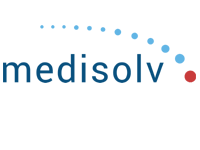Resource:
How Finger Lakes Health System Created a Culture of Quality
The shift from a fee-for-service to pay-for-performance model has caused hospitals to rethink what it means to be a quality-focused organization.
The shift from a fee-for-service to pay-for-performance model has caused hospitals to rethink what it means to be a quality-focused organization. The normally siloed departments of IT, quality, finance and administration have had to embrace a new culture of collaboration. Finger Lakes Health System in Finger Lakes, NY, set out to refine their focus, through education, collaboration and technology, and create a new culture of quality.
The Triple Aim Challenge
FLHS had two goals: To embraced the Institute for Healthcare Improvement’s “Triple Aim1”, and to simplify existing systems and processes. Achieving and sustaining these goals required an organizationwide cultural shift in perspective. One that made accountability for quality care, patient satisfaction, and financial performance a shared responsibility, with a sense of ownership in the hospital’s overall success.
“It’s a pretty tall order to have excellent quality and an exceptional patient experience at a low cost,” explains Kathleen Reilly, Director of Quality and Performance Improvement at FLHS, “and it’s getting harder and harder to do that. We understand that culture shift is very complex,” admits Reilly. “It can’t just be one little piece at a time. In essence, the entire health system has become a learning organization.”
The Solution
The underpinning of culture change at FLHS was cross-collaboration up, down and across the org chart, led by a hands-on CEO and a fully committed Board of Directors. Taking a holistic, long-term view, and armed with the administration’s commitment to change, Reilly and her staff identified six key areas where collaboration, education and technology would best drive this culture shift, and then created a plan to engage each area.
Download the full case study to learn how.

